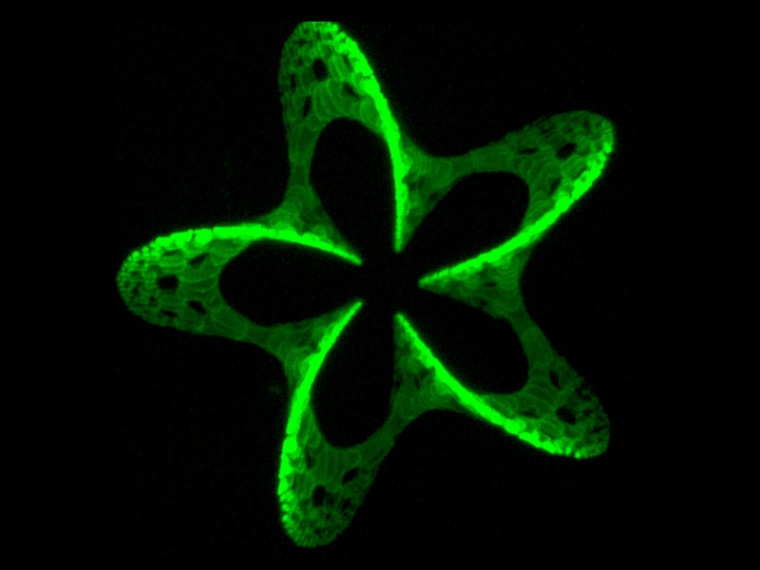
Using laser beams as a paintbrush, researchers can fix molecules in three dimensional structures, a technique that could prove useful for growing biological tissues and building molecular-scale sensors.
The so-called "3-D photografting" technique was pioneered at the Vienna University of Technology with a 3-D canvass of hydrogel, a material made of large molecules arranged in a loose meshwork.
The laser is used to fix smaller molecules in certain pores between the larger molecules, akin to filling select spaces of air between rocks in a gravel pit.
To do this, the smaller molecules are introduced to the hydrogel meshwork and then certain points are irradiated with a laser beam. The introduced molecules bond at those points.
In addition to artsy proof-of-concept molecules like the one above, the technique could useful for growing biological tissues with specific inner structures such as capillaries.
It might also be useful for building tiny chemical sensors.
“Molecules can be positioned which attach to specific chemical substances and allow their detection,” the university explains in a news release. “A microscopic three-dimensional ‘lab on a chip’ becomes possible.”
John Roach is a contributing writer for NBC News Digital. To learn more about him, check out his website. For more of our Future of Technology series, watch the featured video below.